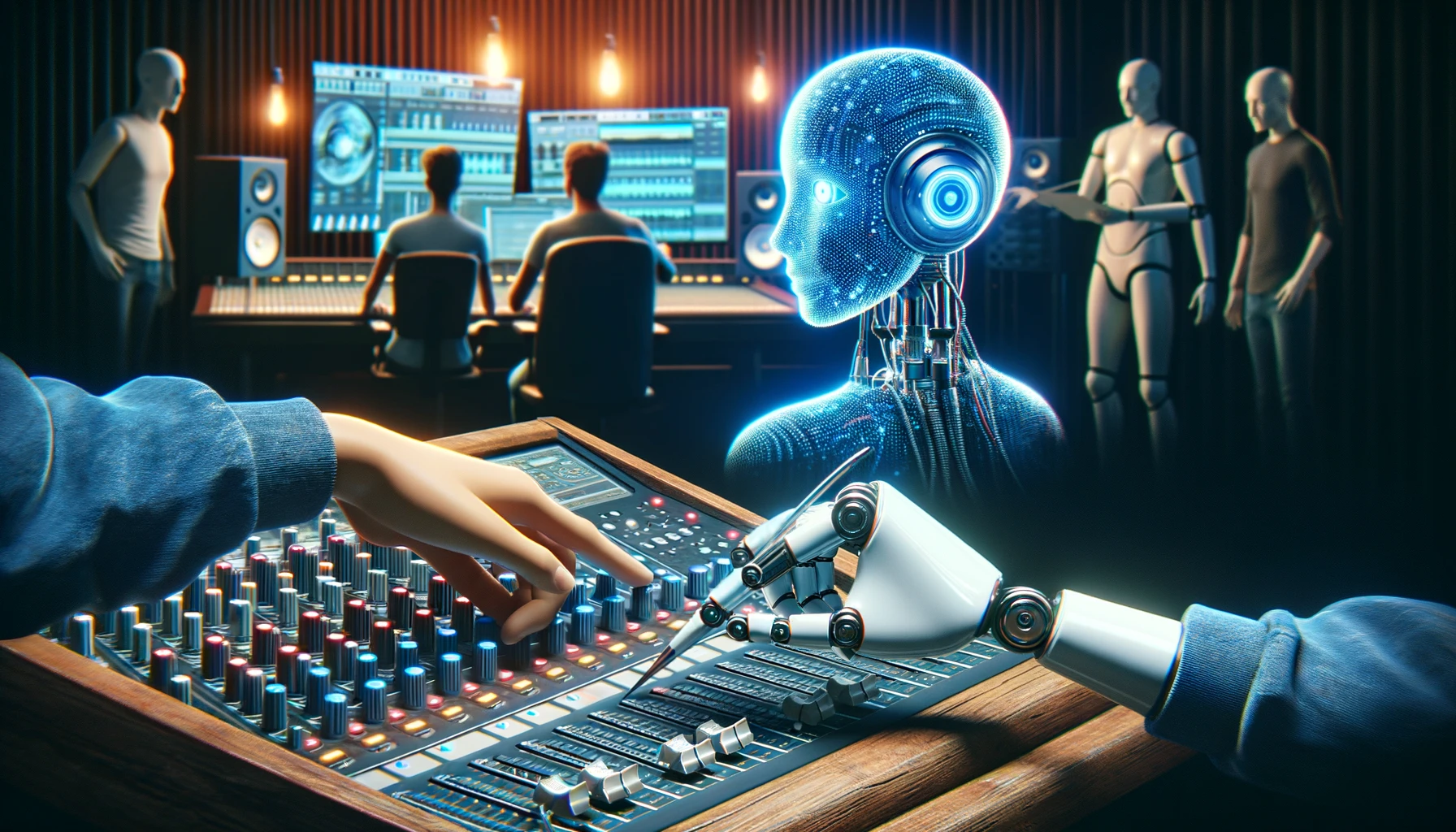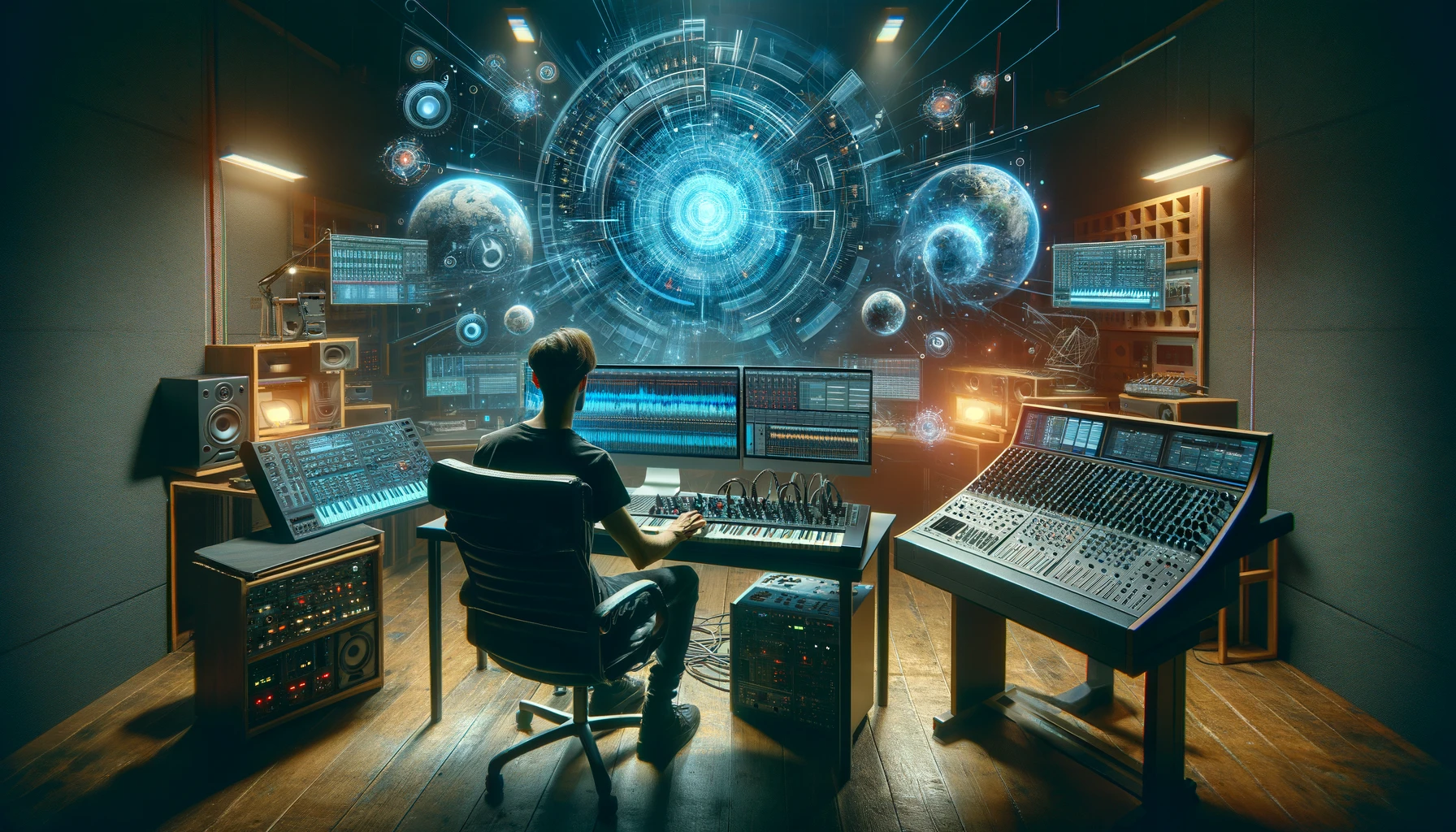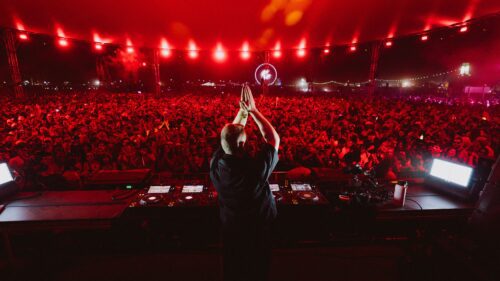5 Revolutionary Ways AI is Shaping the Future of EDM Production – Discover the Uncharted Soundscape: How AI and EDM Are Creating the Next Wave of Musical Innovation.
Introduction
The evolution of Electronic Dance Music (EDM) over the years has been nothing short of a sonic revolution. From underground raves to mainstream festivals, EDM has captured the hearts of millions worldwide, offering an escape into a world of pulsating rhythms and ethereal melodies. At the core of EDM’s allure is its relentless pursuit of innovation, both in the sounds it produces and the technologies it adopts. In this digital age, one of the most transformative forces shaping music production across genres is Artificial Intelligence (AI). The fusion of AI and EDM is not just a testament to the genre’s futuristic ethos but also a glimpse into the endless creative possibilities that technology can unlock.
This article embarks on an exploration of how AI is influencing the landscape of EDM production. From algorithms that can compose entire tracks to software that perfects the mixing and mastering process, AI is at the forefront of a musical metamorphosis. As we delve into current innovations and future possibilities, we’ll discover how AI is not replacing the human touch but enhancing it, pushing the boundaries of what’s possible in music. Through a blend of expert insights, real-world examples, and speculative musings, we aim to provide an informative and engaging read that captures the excitement surrounding this dynamic duo.
Our journey through the beats and bytes of AI-infused EDM production is more than just a technical overview; it’s a celebration of creativity, a look into the future of music, and a discussion on the ethical implications of these advancements. Whether you’re a music producer, an EDM aficionado, or simply curious about the future of art and technology, this article is for you. Let’s dive into the world of AI and EDM, where the beats meet the bits in a dance of digital innovation.
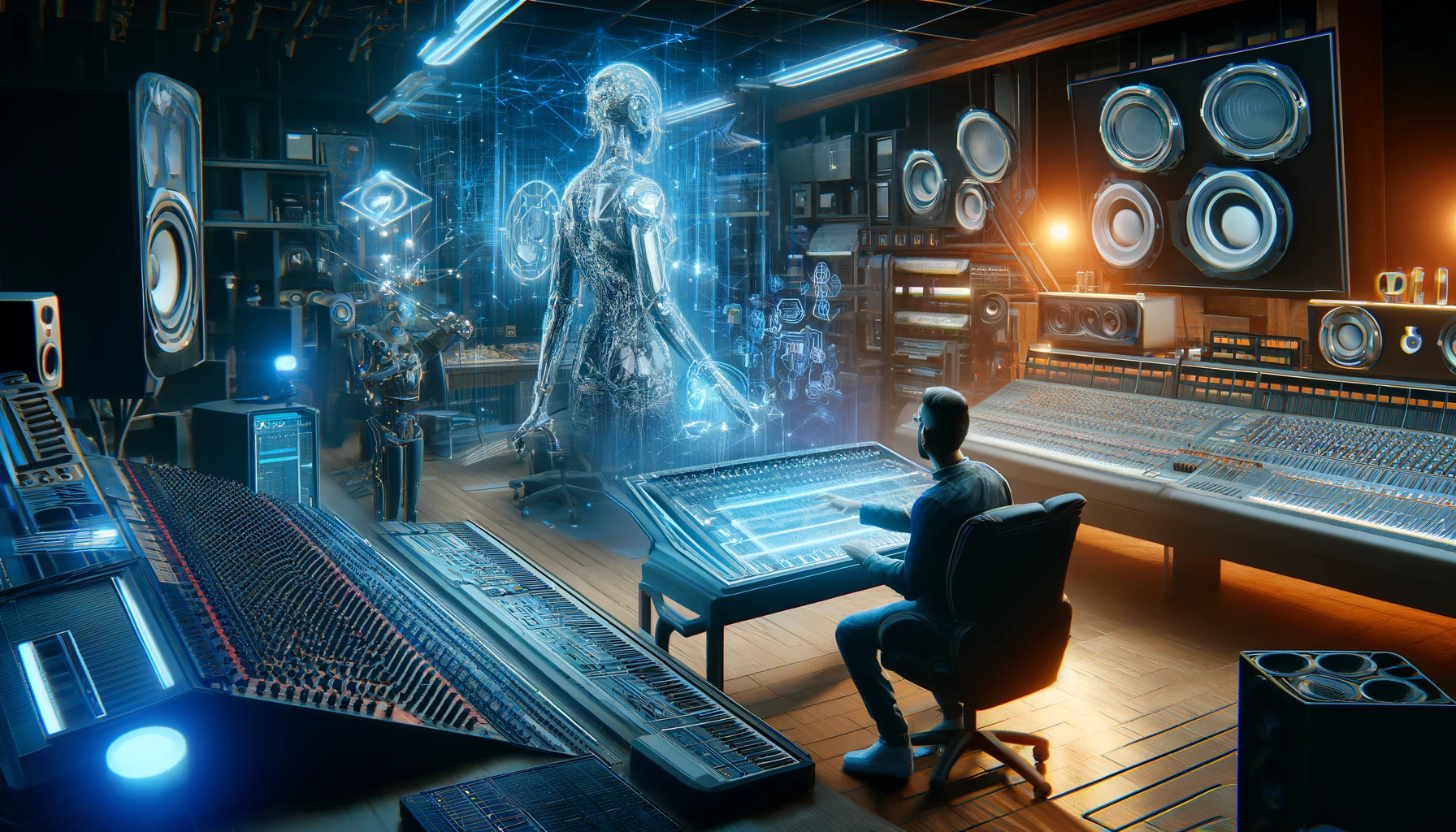
Current State of AI in EDM Production
The integration of Artificial Intelligence in the realm of Electronic Dance Music production marks a pivotal shift in how music is conceived, created, and consumed. This section delves into the current landscape, showcasing AI-driven tools and technologies that are transforming the industry, highlighting artists at the forefront of this movement, and discussing the personalization of music experiences through AI.
AI-Driven Music Creation Tools
In recent years, a plethora of AI-driven tools and software have emerged, offering unprecedented capabilities in music production. Platforms like Amper Music, AIVA, and Endlesss.fm leverage AI to assist producers in composing music, generating unique sounds, and even crafting entire tracks with minimal human intervention. These tools utilize advanced algorithms to analyze vast amounts of music data, learning from existing compositions to produce music that resonates with human listeners. For EDM producers, this means access to an infinite palette of sounds and sequences, enabling the creation of complex tracks that might have been unimaginable a few years ago.
AI in Mixing and Mastering
The precision required in mixing and mastering EDM tracks is monumental, often determining the difference between a hit and a miss. AI technologies, such as Landr and iZotope’s Ozone, are revolutionizing this process by automating intricate aDJustments that would typically require hours of manual work by a skilled engineer. These tools can analyze a track’s spectral balance, dynamic range, and other elements, offering suggestions or automatically applying enhancements to achieve a polished sound. This not only speeds up the production process but also democratizes music creation, allowing aspiring producers with limited technical knowledge to achieve professional-quality sound.
Personalized Music Experiences Through AI
Beyond production, AI is personalizing the way listeners experience EDM. Platforms like Spotify and Apple Music use machine learning algorithms to curate playlists that match individual listeners’ tastes, often introducing them to new EDM tracks and artists. Meanwhile, startups like Boomy allow users to create their own music by simply selecting a genre and mood, with AI handling the composition and production processes. These personalized experiences are not only changing how we discover and enjoy music but are also creating new avenues for artists to reach and engage with their audience.
Artists Incorporating AI into Their Music
Innovative EDM artists are increasingly experimenting with AI to push the boundaries of their music. Holly Herndon’s album “PROTO” features live vocal processing and arrangements created in collaboration with an AI named Spawn. Grimes and Zola Jesus are among the artists who have also explored AI in their music production processes, blending human creativity with machine intelligence to explore new sonic landscapes. These collaborations highlight the creative potential of AI in EDM, suggesting a future where human and artificial creativity coalesce to create groundbreaking music.
The Present and Future Intersection
The current state of AI in EDM production is just the tip of the iceberg. As AI technologies continue to evolve, they are poised to further revolutionize the way music is made, offering tools that enhance creativity, streamline production processes, and create more personalized listening experiences. While concerns about the role of AI in the creative process persist, the examples highlighted here demonstrate the potential for a symbiotic relationship between humans and machines, where each enhances the other’s strengths.
In the following sections, we will explore the innovative intersections of AI and EDM further, diving into breakthrough technologies, the role of AI in live performances, and the future possibilities that could redefine our understanding of music itself.
Innovations at the Intersection of AI and EDM
The synergy between Artificial Intelligence and Electronic Dance Music is fueling a wave of innovations that are not only reshaping the soundscape of EDM but also redefining the possibilities of music production and performance. This section highlights key breakthroughs and trends at this dynamic intersection, offering a glimpse into a future where the rhythm of technology beats in harmony with human creativity.
Breakthrough Technologies in Sound Design
At the heart of EDM is sound design – the art of creating the unique textures and timbres that give electronic music its distinctive character. AI is revolutionizing this domain with technologies capable of generating novel sounds that defy traditional categorization. Tools like Google’s Magenta, an AI project exploring the role of machine learning in the creative process, are at the forefront of this revolution. Magenta’s algorithms can create entirely new sounds based on the analysis of thousands of music samples, offering producers an unparalleled range of sonic possibilities. This innovation not only expands the palette from which artists can draw but also challenges them to integrate these novel sounds into their compositions, pushing the genre into uncharted territories.
AI in Live Performances and DJing
The impact of AI on EDM extends beyond the studio and into the realm of live performance. AI-driven software is beginning to take on roles traditionally reserved for human DJs and performers, from selecting tracks that match the energy of the crowd to applying real-time effects and transitions that enhance the live experience. Companies like WaveAI are pioneering this space with tools that can improvise music in real-time, reacting to the vibe of the audience or the direction of a human collaborator. Such technologies not only add a new dimension to live EDM performances but also open up possibilities for entirely new forms of interactive entertainment, where the boundary between performer and audience becomes increasingly blurred.
Collaborative Projects Between AI and Human Artists
Perhaps the most exciting development at the intersection of AI and EDM is the emergence of collaborative projects that blend the creative visions of human artists with the computational power of AI. These collaborations are producing music that neither humans nor machines could create on their own. An example is the AI Eurovision Contest, where teams composed of musicians and AI researchers come together to create songs entirely or partially generated by AI. These collaborations highlight the potential for AI to act as a creative partner, offering new perspectives and ideas that can inspire artists and elevate their music to new heights.
The Role of Machine Learning in Music Analysis and Genre Evolution
Machine learning, a subset of AI, is playing a crucial role in analyzing music at a level of detail and scale previously unimaginable. By sifting through vast datasets of music, machine learning algorithms can identify patterns and trends that influence the evolution of genres, including EDM. This analysis not only provides insights into the structural elements that define successful tracks but also predicts emerging trends, helping producers stay ahead of the curve. Furthermore, by analyzing listener data, AI can help artists understand their audience better, tailoring their music to the tastes and preferences of their fans.
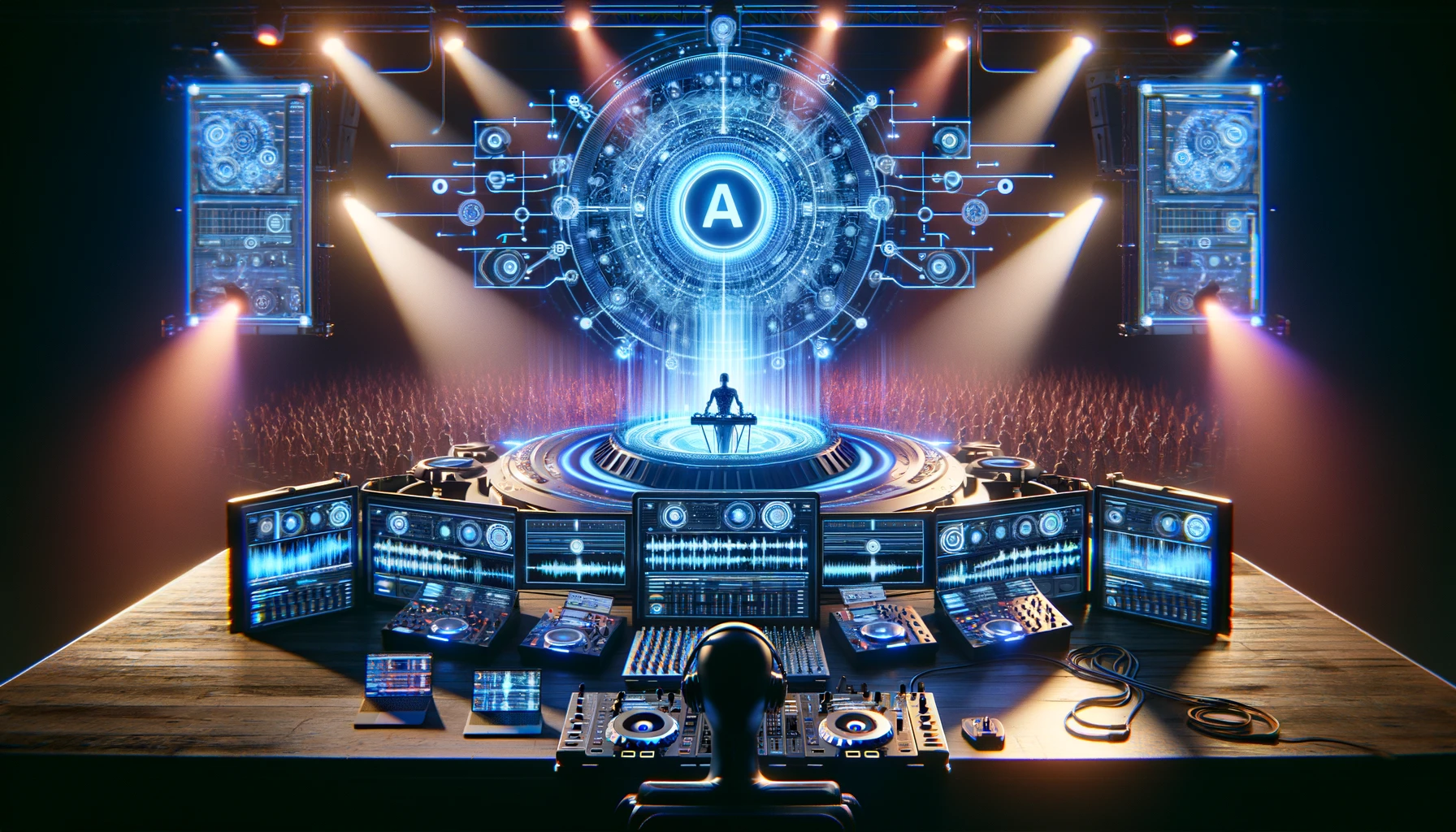
Looking Ahead
The innovations at the intersection of AI and EDM paint a picture of a future where the creation and enjoyment of music are profoundly transformed by technology. As AI continues to evolve, its integration into EDM production and performance is set to deepen, bringing with it new challenges and opportunities. The next section will explore these future possibilities, considering both the exciting potential and the ethical considerations that accompany the growing role of AI in music.
Future Possibilities and Ethical Considerations
The fusion of Artificial Intelligence and Electronic Dance Music opens a portal to a realm brimming with untapped potential and unprecedented challenges. As we stand on the cusp of this new era, it is essential to forecast the future possibilities that AI may unlock in EDM production while navigating the ethical minefields that accompany technological advancement.
Predictions for AI’s Role in Music Production and Performance
The trajectory of AI in EDM suggests a future where the lines between human and machine creativity become increasingly blurred. AI’s capability to analyze and generate music is expected to evolve, leading to more sophisticated and nuanced creations. In the studio, AI could serve as an ever-present collaborator, offering suggestions for melodies, beats, and even lyrics, tailored to the producer’s style and current musical trends. This could significantly reduce the time and effort required to produce tracks, allowing artists to focus on the creative aspects of music production.
On stage, AI-driven systems could become integral to live performances, responding dynamically to the audience’s reactions and altering the music in real time to enhance the experience. Imagine a scenario where the lighting, visuals, and even the music itself are synchronized and adapted on the fly by AI, creating a truly immersive experience that blurs the boundaries between performer, audience, and technology.
Potential Challenges and Ethical Dilemmas
However, the integration of AI into EDM production and performance is not without its challenges. One of the primary concerns is the potential for AI to dilute the authenticity of music, with critics arguing that tracks produced with significant AI involvement lack the soul and emotional depth of music created solely by humans. Additionally, there are fears that AI could exacerbate issues of copyright infringement, as it becomes increasingly difficult to determine the originality of AI-generated compositions.
The democratization of music production through AI also raises questions about the devaluation of artistic skill and the potential oversaturation of the market with AI-generated content. As AI tools become more accessible, distinguishing between the work of seasoned artists and novices may become increasingly challenging, potentially undermining the value of human craftsmanship.
The Balance Between AI Assistance and Human Creativity
Finding a balance between leveraging AI to enhance musical creativity and preserving the human essence that defines art is crucial. This balance involves recognizing AI as a tool rather than a replacement for human creativity. By setting boundaries on AI’s role in the creative process, artists can ensure that their music retains its human touch, with AI serving to amplify their creative vision rather than overshadow it.
Ethical guidelines and best practices for AI in music production could help navigate these challenges, ensuring that AI is used responsibly and in a way that enriches the music industry rather than detracting from it. These guidelines could address issues such as copyright, the ethical use of AI-generated content, and the importance of transparency regarding AI’s involvement in the creative process.
The Impact on the Music Industry and Artist Livelihoods
The continued advancement of AI in EDM production has the potential to significantly impact the music industry, from how music is created and performed to how it is distributed and consumed. While AI could streamline production processes and create new opportunities for artists, it could also lead to increased competition and a shift in what it means to be a music producer or performer.
However, rather than viewing AI as a threat to their livelihoods, artists could embrace it as an opportunity to explore new creative avenues, reach wider audiences, and redefine the music industry for the digital age. By collaborating with AI, artists can push the boundaries of what is possible in music, creating sounds and experiences that were previously unimaginable.
Conclusion
The future of AI in EDM production is ripe with possibilities, offering a canvas for artists to experiment with new sounds, concepts, and methods of engagement. As we look forward, it is crucial to approach the integration of AI with caution and consideration, ensuring that technology serves to enhance human creativity rather than replace it. The journey ahead is not without its challenges, but by navigating these waters with ethical integrity and an open mind, we can unlock a future where AI and EDM coalesce into a symphony of digital innovation and human artistry.
